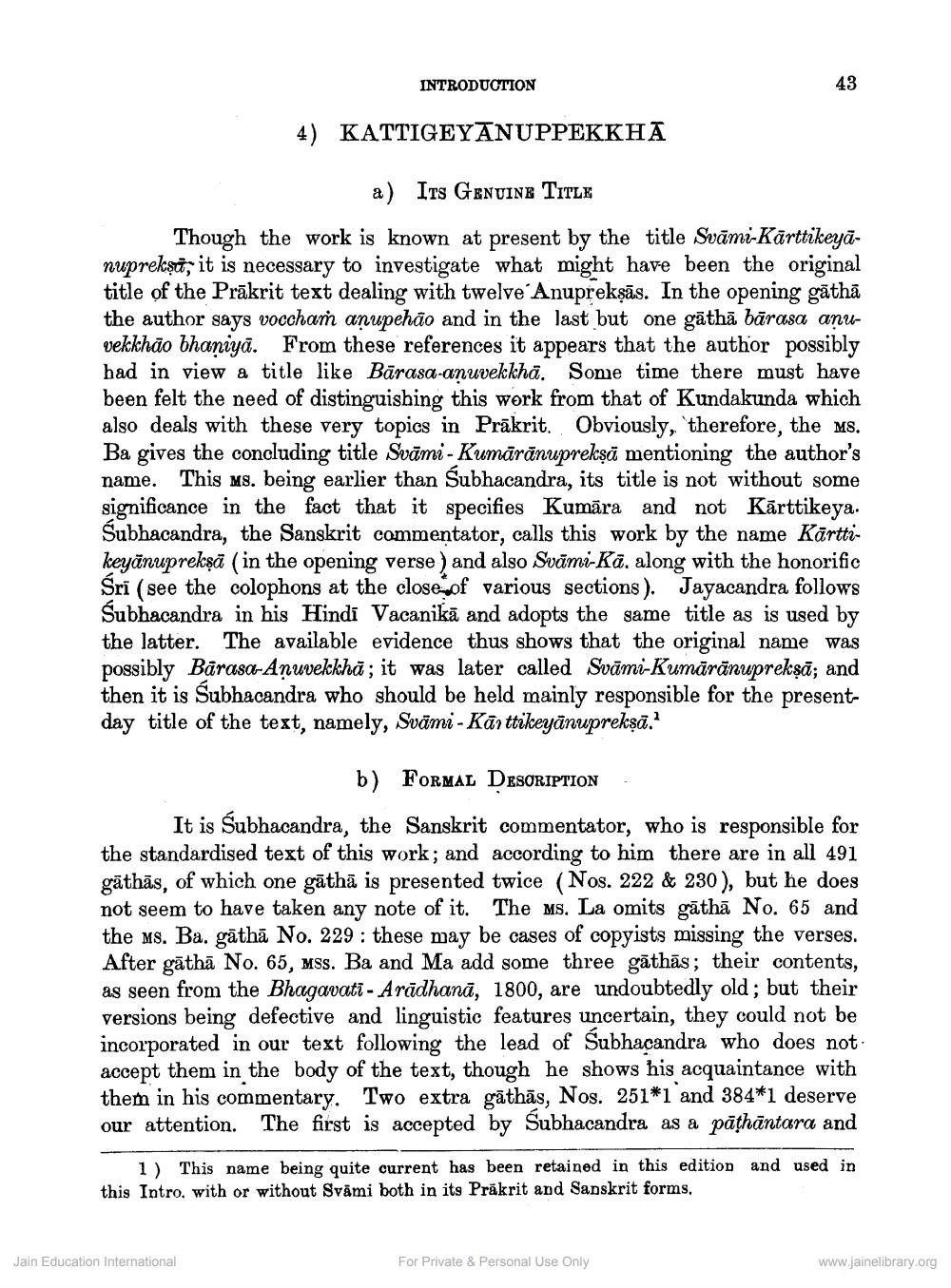________________
INTRODUCTION
43
4) KATTIGEYANUPPEKKHA
a) Its Genuine TITLE
Though the work is known at present by the title Svāmi-Kārttikeyānupreksůit is necessary to investigate what might have been the original title of the Prākrit text dealing with twelve Anuprekşās. In the opening gāthā the author says vocchaṁ anupehão and in the last but one gāthā bārasa anuvekkhão bhaniyā. From these references it appears that the author possibly had in view a title like Bārasa-anuvekkhā. Some time there must have been felt the need of distinguishing this work from that of Kundakunda which also deals with these very topics in Prākrit. Obviously, therefore, the ms. Ba gives the concluding title Svāmi - Kumārānuprekşā mentioning the author's name. This Ms. being earlier than Subhacandra, its title is not without some significance in the fact that it specifies Kumāra and not Kārttikeya. Subhacandra, the Sanskrit commentator, calls this work by the name Kārttikeyānuprekşā (in the opening verse ) and also Svāmi-Kā. along with the honorific Sri ( see the colophons at the close of various sections ), Jayacandra follows Subhacandra in his Hindi Vacanikā and adopts the same title as is used by the latter. The available evidence thus shows that the original name was possibly Barasa-Anuvekkhā; it was later called Svāmi-Kumārānupreksā; and then it is Subhacandra who should be held mainly responsible for the presentday title of the text, namely, Svāmi - Kārttikeyānupreksā.
b) FORMAL DESCRIPTION :
T
.
It is Subhacandra, the Sanskrit commentator, who is responsible for the standardised text of this work; and according to him there are in all 491 gāthās, of which one gāthā is presented twice (Nos. 222 & 230), but he does not seem to have taken any note of it. The ms. La omits gāthā No. 65 and the ms. Ba. gāthā No. 229 : these may be cases of copyists missing the verses. After gāthā No. 65, mss. Ba and Ma add some three găthās; their contents, as seen from the Bhagavati - Arādhanā, 1800, are undoubtedly old; but their versions being defective and linguistic features uncertain, they could not be incorporated in our text following the lead of Subhacandra who does not accept them in the body of the text, though he shows his acquaintance with them in his commentary. Two extra gäthās, Nos. 251*1 and 384*1 deserve our attention. The first is accepted by Subhacandra as a pāthāntara and
1) This name being quite current has been retained in this edition and used in this Intro, with or without Svāmi both in its Präkrit and Sanskrit forms,
Jain Education International
For Private & Personal Use Only
www.jainelibrary.org




